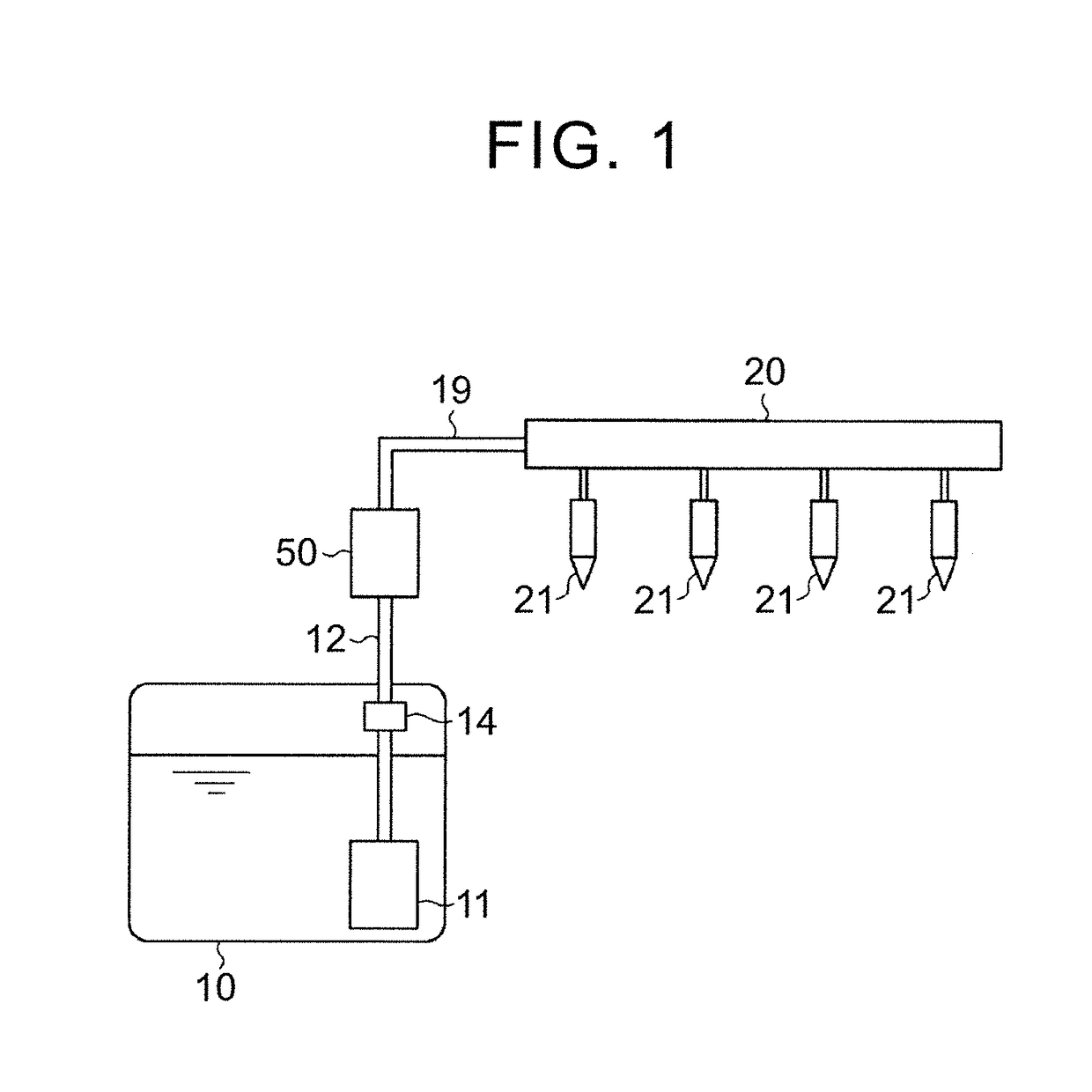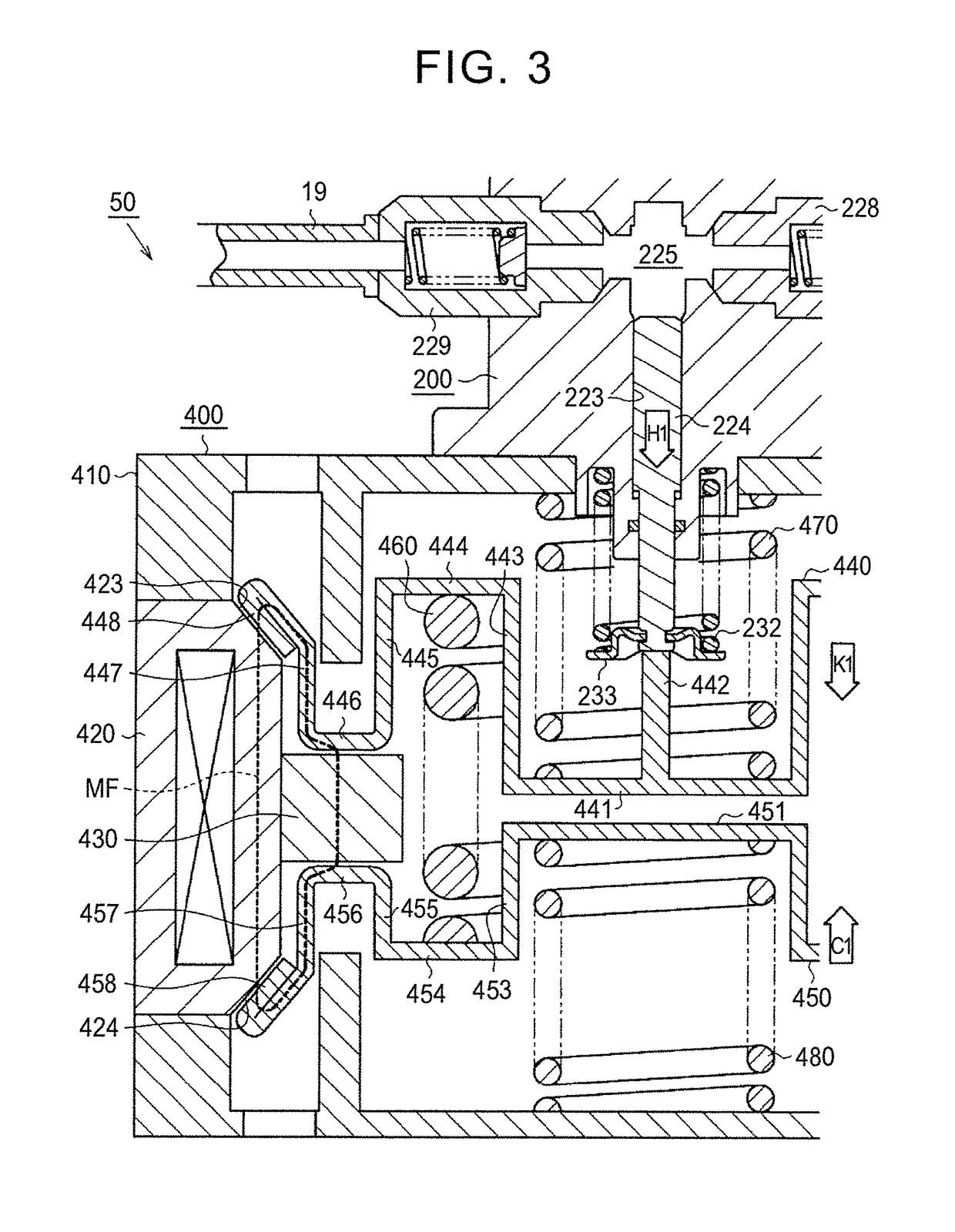Fuel pump
a fuel pump and pump body technology, applied in the direction of machines/engines, liquid fuel engines, positive displacement liquid engines, etc., can solve the problem of complex configuration of the fuel pump, and achieve the effect of simple configuration
- Summary
- Abstract
- Description
- Claims
- Application Information
AI Technical Summary
Benefits of technology
Problems solved by technology
Method used
Image
Examples
Embodiment Construction
[0030]Hereinafter, a fuel pump according to an embodiment will be described in detail with reference to FIG. 1 to FIG. 6. The fuel pump 50 according to the present embodiment is configured as a high-pressure fuel pump that is provided in a vehicle-mounted direct injection engine.
[0031]As shown in FIG. 1, a feed pump 11 that draws fuel is provided inside the fuel tank 10 of the direct injection engine. The feed pump 11 is connected to the fuel pump 50 via a low-pressure fuel passage 12. A regulator 14 is provided in the low-pressure fuel passage 12. The regulator 14 drains fuel inside the low-pressure fuel passage 12 to the fuel tank 10 when a fuel pressure inside the low-pressure fuel passage 12 exceeds a prescribed value.
[0032]The fuel pump 50 is, for example, provided near the fuel tank, and is connected to a delivery pipe 20 via a high-pressure fuel passage 19. Injectors 21 are connected to the delivery pipe 20. The injectors 21 are respectively provided in correspondence with cy...
PUM
 Login to View More
Login to View More Abstract
Description
Claims
Application Information
 Login to View More
Login to View More - R&D
- Intellectual Property
- Life Sciences
- Materials
- Tech Scout
- Unparalleled Data Quality
- Higher Quality Content
- 60% Fewer Hallucinations
Browse by: Latest US Patents, China's latest patents, Technical Efficacy Thesaurus, Application Domain, Technology Topic, Popular Technical Reports.
© 2025 PatSnap. All rights reserved.Legal|Privacy policy|Modern Slavery Act Transparency Statement|Sitemap|About US| Contact US: help@patsnap.com



